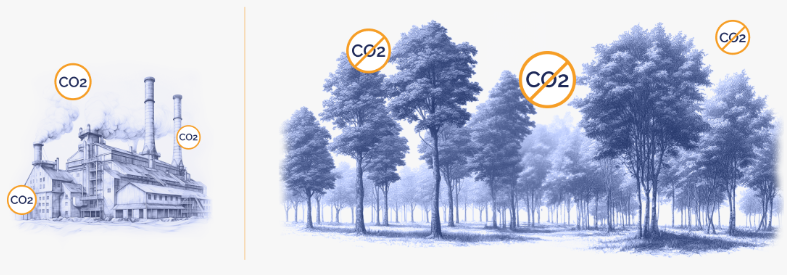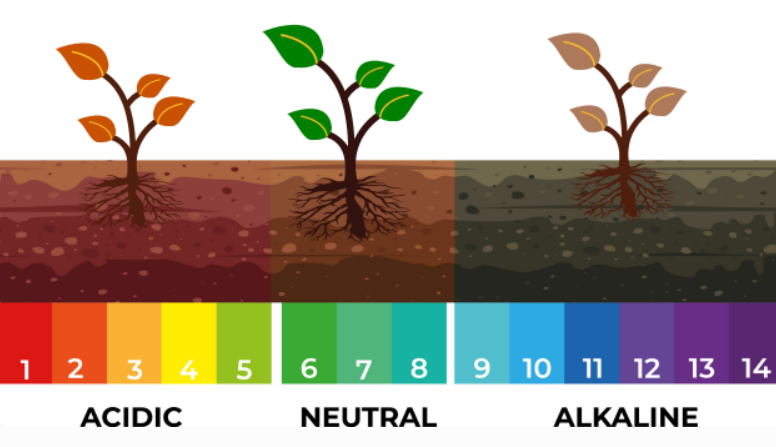Technical Grade vs. Feed Grade Phosphoric Acid: Use Cases and Benefits
Phosphoric acid is a vital chemical used across industries - from fertilizers to animal nutrition. But not all phosphoric acid is the same. Choosing between technical and feed grade can impact both performance and safety. As a key supplier in this field, DECACHEM plays an important role in delivering high-quality phosphoric acid to meet diverse industrial needs. Here's why selecting the right grade matters - and how each is best used.
What is Phosphoric Acid?
Phosphoric acid (H₃PO₄) is a colorless, odorless and non-volatile inorganic acid commonly used in industrial, agricultural and food applications. Chemically, it consists of three hydrogen atoms, one phosphorus atom, and four oxygen atoms, and appears as a clear, syrupy liquid in its pure form. It is known for its moderate acidity and excellent reactivity, making it a valuable ingredient in a wide range of processes.
There are two primary production methods for phosphoric acid: the wet process and the thermal process. The wet process involves reacting phosphate rock with sulfuric acid, producing phosphoric acid and gypsum as a by-product. This method is most commonly used for fertilizer production. The thermal process, on the other hand, yields a purer form by burning elemental phosphorus and hydrating the resulting phosphorus pentoxide. This method is typically used to produce feed and food-grade phosphoric acid due to its higher purity.
Phosphoric acid’s versatility enables its use in fertilizers, animal feed, food additives, water treatment, metal surface treatment and industrial cleaning products. Each of these applications demands specific purity levels, making it essential to select the appropriate grade based on intended use.
Understanding Technical Grade Phosphoric Acid
Technical grade phosphoric acid is a moderately purified form of phosphoric acid primarily used in industrial and agricultural applications where extremely high purity is not required. It is typically produced through the wet process, where phosphate rock is reacted with sulfuric acid to yield phosphoric acid and calcium sulfate (gypsum) as a by-product. This method is efficient for large-scale production and provides sufficient purity for many technical applications.
The purity level of technical grade phosphoric acid generally ranges from 75% to 85%, with minor impurities such as heavy metals, fluorides, and other trace elements. While these impurities are minimal, they render the acid unsuitable for food or pharmaceutical use. However, the concentration and chemical stability of technical grade make it an effective and economical choice for a wide range of non-food uses.
Typical applications of technical grade
phosphoric acid include:
Fertilizers: It is a key ingredient in producing phosphate-based fertilizers like monoammonium phosphate (MAP) and diammonium phosphate (DAP), which are essential for crop nutrition.
Metal treatment: Used in metal surface preparation, phosphoric acid removes rust and scale and helps create a protective phosphate coating, improving paint adhesion and corrosion resistance.
Industrial cleaners: Their acidic properties make them effective cleaning agents for removing mineral deposits, rust and scale from equipment and surfaces in industrial environments.
Water treatment chemicals: Technical grade phosphoric acid is also used to adjust pH and prevent corrosion in water systems, especially in boilers and cooling towers.
Overall, technical grade phosphoric acid provides a practical balance between performance and cost for heavy-duty industrial processes.
Safety and Handling Requirements
Technical grade phosphoric acid must be handled with care, following proper safety protocols. According to its Material Safety Data Sheet (MSDS), it's corrosive and can cause skin, eye and respiratory irritation upon contact. Use of personal protective equipment (PPE) - such as gloves, goggles and chemical-resistant clothing - is essential.
Equipment in contact with phosphoric acid should be made from compatible materials like stainless steel, certain plastics (e.g., PVC or HDPE), or rubber-lined tanks to prevent corrosion.
For storage, keep the acid in tightly sealed, labeled containers in a cool, dry and well-ventilated area away from incompatible substances like strong bases or reactive metals.
Understanding Feed Grade Phosphoric Acid
Feed grade phosphoric acid is a purified form of phosphoric acid specifically refined for use in animal nutrition. Unlike technical grade, it undergoes additional purification - often through the thermal process - to remove impurities and meet strict safety standards. This ensures the acid is safe for inclusion in animal feed, particularly for livestock and poultry.
In animal nutrition, phosphoric acid is a key source of phosphorus, an essential mineral that supports various biological functions. It plays a central role in bone formation, energy metabolism and the development of cells and tissues. In feed formulations, it enhances the bioavailability of phosphorus, making it easier for animals to absorb and utilize the nutrient effectively.
Feed grade phosphoric acid is widely used in compound feed, mineral mixes and premixes, particularly for poultry, swine, and cattle. It helps ensure optimal growth rates, feed efficiency and overall health in commercial animal production systems.
To ensure safety and efficacy, feed grade phosphoric acid must comply with stringent regulatory standards. In the United States, the Food and Drug Administration (FDA) regulates its use in animal feed, while in the European Union, the European Food Safety Authority (EFSA) sets specifications for purity, heavy metal limits, and usage conditions. Compliance with these regulations ensures the product is free from harmful contaminants and suitable for long-term animal consumption.
Thanks to its high purity and essential role in animal health, feed grade phosphoric acid is a trusted additive in modern livestock nutrition - supporting both animal welfare and farm productivity.
Health and Nutritional Benefits for Animals
Feed grade phosphoric acid contributes significantly to bone health and skeletal development, particularly in young, growing animals. It aids in digestive processes by supporting enzymatic functions and creating a favorable pH environment. Importantly, it helps maintain a proper calcium-phosphorus balance, crucial for metabolic stability and optimal nutrient absorption.
Key Differences Between Technical and Feed Grade Phosphoric Acid
While both technical and feed grade phosphoric acid share the same basic chemical structure (H₃PO₄), they differ significantly in terms of purity, safety standards and intended applications.
The most notable distinction lies in purity and contamination levels. Technical grade phosphoric acid, typically produced via the wet process, contains small amounts of impurities such as heavy metals, fluorides and sulfates. These impurities are acceptable for industrial uses but make the acid unsuitable for consumption. In contrast, feed grade phosphoric acid undergoes additional purification - often through the thermal process - to eliminate contaminants and meet high safety standards. It is refined to ensure minimal levels of toxic substances, making it safe for animal ingestion.
Another major difference is regulatory compliance. Feed grade phosphoric acid must adhere to strict guidelines set by authorities like the FDA (U.S.) and EFSA (EU). These regulations cover everything from production methods and allowable impurity levels to labeling and traceability. Technical grade, while still subject to basic industrial safety standards, does not require compliance with these stringent feed-specific regulations.
These differences directly influence industry use cases. Technical grade phosphoric acid is commonly used in fertilizer production, metal surface treatment, industrial cleaning agents and water treatment chemicals - where high purity is not critical but cost-efficiency and performance are. Feed grade, on the other hand, is tailored for the animal nutrition sector, where health, safety and nutrient bioavailability are top priorities.
Understanding these key distinctions is essential for businesses to select the appropriate grade for their application - ensuring both compliance and optimal performance across agricultural and industrial operations.

Choosing the Right Grade for Your Needs
Selecting the appropriate grade of phosphoric acid is crucial for ensuring both operational efficiency and regulatory compliance. Before making a decision, consider the following questions:
- What is the intended application - industrial process, fertilizer production, or animal feed?
- Are there regulatory or purity requirements in your region or industry?
- Is product safety or cost-efficiency the higher priority?
For industrial applications like metal surface treatment, water conditioning, or cleaning agents, technical grade phosphoric acid is typically sufficient. It offers reliable performance at a lower cost, making it a practical choice where ultra-high purity is not essential.
If you're operating in
agriculture and producing
animal feed or premixes,
feed grade phosphoric acid is the only suitable option. Its compliance with safety standards and low contaminant levels ensures
it supports animal health without introducing risks.
There is always a
trade-off between cost, safety and functionality. Technical grade is more economical and ideal for high-volume, non-ingestible uses, but it’s not suitable for regulated applications involving consumption. Feed grade comes at a higher cost due to stricter production and quality controls, but it guarantees safety for animals and aligns with legal requirements.
Ultimately, your choice should align with your
industry’s demands, safety obligations and end-use performance goals. When in doubt, consult with a trusted supplier like
DECACHEM, who can guide you in selecting the grade that best fits your operational and compliance needs.
Environmental and Regulatory Considerations
Both technical and feed grade phosphoric acid require careful handling to minimize environmental risks. Technical grade acid, with its higher impurity levels, can pose environmental hazards if improperly disposed of. Contaminants like heavy metals and fluorides may harm soil and water ecosystems, requiring regulated disposal in accordance with local environmental laws.
For feed grade phosphoric acid, adherence to animal welfare regulations is paramount. Regulatory bodies like the FDA and EFSA ensure that feed-grade acids meet strict standards for safety and purity. These regulations help protect livestock health, ensuring that the phosphoric acid used in animal feed poses no risk to animal welfare or consumer health.
Proper disposal practices are critical for both grades. Spills or waste must be neutralized before disposal to avoid contamination. It’s essential to follow local environmental guidelines and hazardous waste management protocols to minimize the environmental footprint and ensure regulatory compliance.
Future Trends and Innovations in Phosphoric Acid Applications
The future of phosphoric acid is focused on sustainability and environmentally friendly production methods. New innovations in manufacturing processes, such as the development of eco-friendly techniques, aim to reduce the environmental impact of phosphoric acid production by minimizing emissions and waste. One such trend is the use of alternative, less harmful chemicals in the refining process, which can improve the efficiency and reduce the ecological footprint of production.
In the realm of agriculture, biocompatible acids are gaining traction, particularly in sustainable farming. These acids are designed to be safer for both the environment and livestock, providing a greener alternative to traditional phosphoric acid sources. Innovations in acid refinement are also leading to higher purity levels and greater specificity, allowing for more targeted applications in both industrial and agricultural sectors. These developments promise to enhance performance while supporting a more sustainable and regulatory-compliant future.
FAQs
1) Is feed grade phosphoric acid safe for humans?
Feed grade phosphoric acid is specifically refined for animal consumption and meets strict safety standards set by regulatory bodies like the FDA and EFSA. However, it is not intended for direct human consumption. For humans, food-grade phosphoric acid is required, which undergoes even stricter purification processes to ensure it is safe for ingestion.
2) Can I substitute one grade for another?
No, you should not substitute one grade of phosphoric acid for another without considering the intended application. Technical grade phosphoric acid contains impurities that make it unsuitable for animal feed or food production. Similarly, feed-grade phosphoric acid is too expensive and unnecessary for industrial processes. Always choose the appropriate grade for the specific requirements of your industry.
3) How is purity tested in different grades?
Purity in phosphoric acid is tested using techniques like titration and ICP-OES (Inductively Coupled Plasma Optical Emission Spectroscopy), which analyze the acid’s composition and detect contaminants such as heavy metals, fluoride and other impurities. Feed grade phosphoric acid must meet specific purity thresholds outlined by regulatory authorities, while technical grade allows for higher levels of acceptable impurities.
4) Are there food-grade versions of phosphoric acid?
Yes, food-grade phosphoric acid exists and is used as an acidulant in soft drinks and other food products. This grade is highly purified, ensuring it is safe for human consumption and meets stringent FDA and EFSA standards for food safety.
5) What are alternatives to phosphoric acid in animal feed?
Alternatives to phosphoric acid in animal feed include
calcium phosphate,
dicalcium phosphate, and
monocalcium phosphate, which provide a similar source of phosphorus for livestock. Additionally,
organic acids such as citric or lactic acid can sometimes be used in specific formulations, though they typically don’t offer the same cost-effectiveness or phosphorus content as phosphoric acid.
















